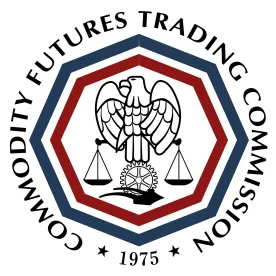Highlights
The U.S. Commodity Futures Trading Commission recently issued new guidance setting forth the factors it will consider when imposing civil monetary penalties in its enforcement actions
The guidance consists of three primary factors and several sub-factors, including the gravity of the respondent’s conduct, aggravating or mitigating circumstances, and the “total mix of remedies and monetary relief” imposed by criminal agencies or other civil regulators
Although “new” in the sense that the CFTC has not issued formal guidance on civil monetary penalties in over two decades, it seems unlikely that the guidance will significantly change how the CFTC approaches penalties
On May 20, the U.S. Commodity Futures Trading Commission (CFTC) issued new guidance addressing the factors the CFTC’s Division of Enforcement “will consider in recommending an appropriate civil monetary penalty to the Commission in an enforcement action, whether administrative or injunctive.”
The new guidance, which appears in a memorandum from James McDonald, director of the CFTC’s Division of Enforcement, is the first addressing civil penalties issued by the agency in over two decades. According to McDonald, the goal of the guidance is to “provid[e] market participants with greater transparency as to Division staff’s decision-making criteria regarding civil monetary penalties,” which in turn is intended to “facilitate the Division’s efforts to be tough on those who break the rules while striving for fair and consistent outcomes in doing so.”
As explained in the memo,
The [Commodity Exchange] Act authorizes civil monetary penalties for each violation of the Act and [the CFTC’s] Regulations, and it sets the maximum penalty per violation. . . . Generally, penalties may be determined on a per violation basis or up to triple the monetary gain to the Respondent, whichever is greater. The Act and Commission precedent require that penalties be assessed in relation to the gravity of the violation.
Building on this statutory base, the guidance “is intended to provide a framework through which Division staff will evaluate the appropriate penalty to recommend to the Commission.” The new framework consists of three factors – the gravity of the violation, relevant mitigating and aggravating circumstances, and other considerations – the Division of Enforcement will consider in making civil penalty recommendations to the full Commission.
The Gravity of the Violation
The first of the new factors, the “gravity of the violation,” is “the primary consideration in determining the appropriate civil monetary penalty.” While McDonald cautioned that none of them is dispositive, the Division staff will consider the following facts in evaluating the gravity of the violation:
-
Nature and scope of the violations, including (a) the number, duration, type and degree of the violations; (b) the respondent’s role in the violations; (c) whether the respondent acted in concert with others; (d) any efforts to conceal the ongoing violations; and (e) whether the violations resulted in harm to victims and, if so, the number and type of victims;
-
Respondent’s state of mind, including whether the conduct was intentional or willful; and
-
Nature and scope of any consequences flowing from the violations, including any (a) harm (or risk of harm) to victims and market participants; (b) benefit or potential benefit to the respondent; and (c) impact on market integrity, customer protection, or the mission and priorities of the CFTC in implementing the purposes of the Act.
Any Mitigating and Aggravating Circumstances
The new guidance further provides, “[i]n making its recommendations to the Commission, Division staff will continue to consider all relevant mitigating and aggravating circumstances,” including:
-
Post-violation conduct, which includes “mitigating conduct, such as attempts to cure, return of victim funds, or efforts to improve a compliance program,” and “aggravating conduct, such as concealment or obstruction of an ongoing investigation”;
-
Self-reporting, i.e., “[w]hether the Respondent self-reported the misconduct, as well as the extent of cooperation and remediation, as detailed in the Division’s Enforcement Advisories”;
-
Timeliness of remediation;
-
Existence and effectiveness of the company’s pre-existing compliance program;
-
Any prior misconduct, such as whether the respondent is a recidivist;
-
Pervasiveness of misconduct within the company, including responsibility of management; and
-
Nature of any disciplinary action taken by the company with respect to the individuals engaged in misconduct.
Other Considerations
Finally, in addition to the specific criteria listed above, the CFTC’s new penalties guidance includes a miscellaneous “including but not limited to” category:
-
The total mix of remedies and monetary relief to be imposed on the respondent in the recommended enforcement action, in addition to the remedies and relief to be imposed in parallel cases involving criminal authorities (including incarceration), other regulatory entities, or self-regulatory organizations;
-
Monetary and non-monetary relief in analogous cases; and
-
The need to conserve CFTC resources, including timely settlement.
Although the factors that make up the new CFTC guidance are specific, McDonald cautioned that any one factor “may be more or less relevant to the facts and circumstances of a particular matter and the type of violation at issue. In applying the factors . . . [enforcement] staff will be guided by the overarching consideration of ensuring the proposed penalty achieves the dual goals of specific and general deterrence.”
While the CFTC’s penalties guidance is “new” in the sense that it is the first formal statement in many years of the Division of Enforcement’s approach to imposing penalties, it is unlikely that the guidance will significantly change how the enforcement staff makes penalties recommendations in practice. As McDonald acknowledges, the factors “[g]enerally reflect the existing practice within the Division . . . .” Moreover, the factors formalized in the new guidance are largely the same as guidance previously provided by the U.S. Securities and Exchange Commission (SEC) for evaluating cooperation provided by respondents in SEC enforcement actions. Practitioners’ experience with the SEC’s guidance over the years has shown that it is nearly impossible to evaluate how the factors it established are applied by the SEC’s enforcement staff, or how (or if) they affect the amount of civil penalties imposed in any given case.





 />i
/>i

